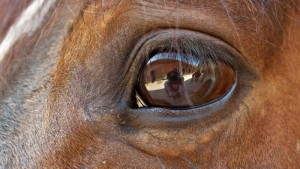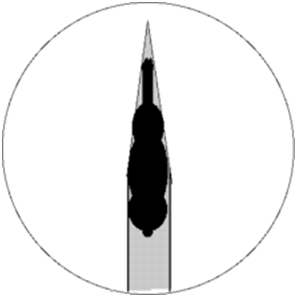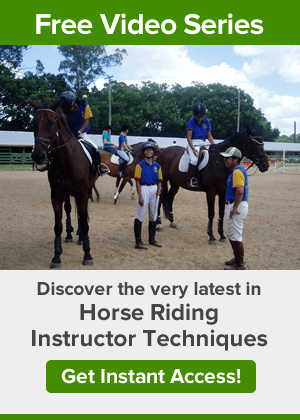 What it is about horses’ eyes?
What it is about horses’ eyes?
Your life can be in turmoil, full of stress and worries and then . . . you look into the eyes of a contented horse, really look into them, and it can have such an amazing effect on your day.
A large eye has a much more powerful effect, and horses have eyes larger than any other land mammal.
The more we understand the way that horses use their eyes, the easier they are to train and much of their natural behavior is related to their eyes.
Blind Spots
For instance, they have both monocular vision and binocular vision with a range vision of 350 degrees. Their ‘blind spots’ are just in front of their eyes and behind their head, over their back and their tail as shown in the image at right side*.
When we are working around horses, we must take care that they see us when we approach. If we approach from behind, their natural instinct could be to kick out with both back legs and run away.
If you are carrying an object they can’t see or have loose clothing that they can only see parts of every now and then, their natural instinct is to run away
Binocular Vision
 The two images above* show how the outline of a horse can affect their vision. Horses are prey animals and they rely on their eyes to see danger both near and far away. It is unnatural for them to only see what is in front of them and to lose their distance vision.
The two images above* show how the outline of a horse can affect their vision. Horses are prey animals and they rely on their eyes to see danger both near and far away. It is unnatural for them to only see what is in front of them and to lose their distance vision.
Any horse being ridden in a round outline with the head more vertical must have more trust in their surrounding areas, but more importantly with their rider. To achieve this type of outline, the rider must have an established seat and be consistent with their aids to ride the horse forward into a contact.
A jumping horse may raise their head a few strides in front of a jump, to assess the jumps and their take off spots. By the time the horse is ready to take of and go over the jump, the obstacle has already disappeared from their sight.
Monocular Vision
 A monocular vision is the ability to see with both eyes separately. This allows the horse to view what is on either side of their body (as shown in the image above*), although their ability to see through monocular vision is not as clear as their binocular vision.
A monocular vision is the ability to see with both eyes separately. This allows the horse to view what is on either side of their body (as shown in the image above*), although their ability to see through monocular vision is not as clear as their binocular vision.
You may be out on a trail and your horse will move away or ‘shy’ from a scary object. As your horse moves away from the scary object, they will turn their head to see the object with both eyes.
Sometimes, particularly with less experienced horses and less confident horses they will appear to have two different ability levels on either side of their body. They may be ridden past an object a number of times viewing it out of one eye. Then they are ridden past this same object on the other rein to view it out of the other eye and they take fright.
Horse Behaviour and Instinct
Horses use their eyes to help with their well-developed instinctive reaction to run away from any possible danger and to flee their predators. This instinct is still exists in the modern horse, but through domestication and training they have gained trust in humans.
This special bond between horses and human has been well researched to have a beneficial effect on humans from troubled children, abused teenagers, team building, drug addiction, Alzheimer’s and special education programs.
Looking deeply into the eye of the horse can be the first step to create the bond.
* Wikipedia.org

